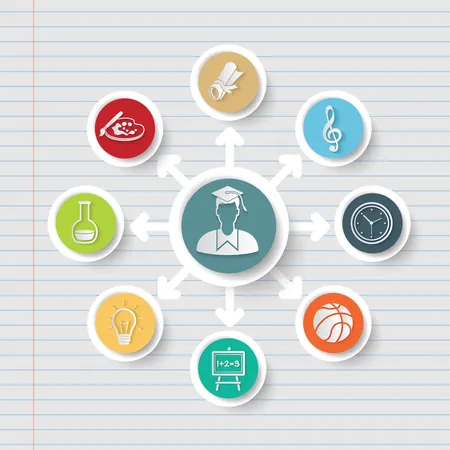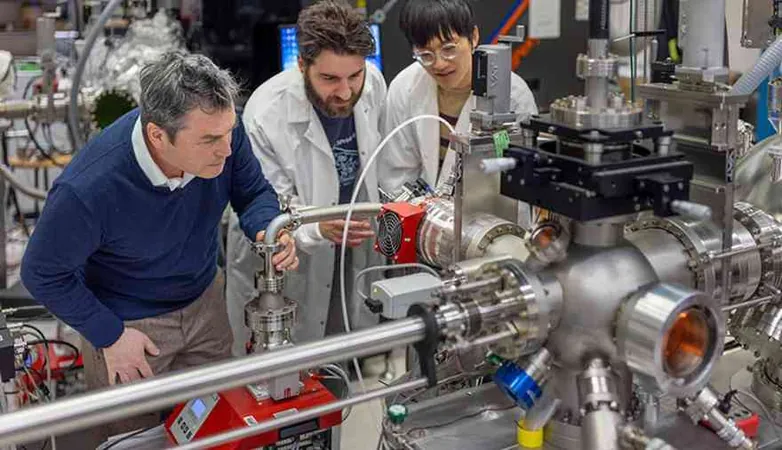
Revolutionizing Liberal Arts: How Systems Thinking is Shaping the Future of Education
2025-06-23
Author: Ming
Unlocking the Power of Liberal Arts Education
In an era defined by rapid change and complexity, the liberal arts education model stands tall, equipping individuals with a well-rounded worldview and specialized expertise. This educational approach champions social responsibility, fosters critical thinking, and enhances practical skills across various disciplines, ultimately preparing students to tackle real-world challenges.
The Challenge: Staying Relevant in a Complex World
While the value of a liberal arts education has been long established, an increasingly interconnected society demands that this model adapts and evolves. Enter systems thinking—an innovative framework that, when integrated with learner-centered teaching, enhances the educational experience and prepares students to navigate complex issues effectively.
What is Systems Thinking?
Systems thinking provides a holistic lens through which students can analyze intricate relationships and patterns across various fields. For instance, in environmental science, it fosters a comprehensive understanding of ecosystems by integrating ecological, economic, and societal aspects to address sustainability challenges. Similarly, disciplines like economics and sociology leverage systems thinking to dissect market dynamics and societal issues like inequality.
Why Is It Important?
Integrating systems thinking in a liberal arts curriculum cultivates critical skills that are essential for today’s learners: 1. **Pattern Recognition**: Helps students spot connections across various disciplines. 2. **Holistic Problem-Solving**: Encourages solutions that consider broader contexts. 3. **Enhanced Critical Thinking**: Fuels thorough analysis and informed decision-making.
Bridging Theory and Practice: Tools for Success
By equipping students with systems thinking tools—such as causal loop diagrams and behavior over time graphs—educators can foster connections between disciplines, enriching students’ learning experiences and sharpening their problem-solving skills.
A New Purpose: Embracing Self-Directed Learning
The core purpose of liberal arts education is to nurture rounded individuals equipped with ethical reasoning and critical analysis abilities. Systems thinking elucidates how various disciplines connect, aiding students in defining their educational scope and understanding the limits of their knowledge.
The Role of Learner-Centered Teaching
Transforming traditional classrooms, learner-centered teaching places students at the forefront of their educational journey, promoting reflection, collaboration, and independent problem-solving. This approach encourages students to take charge, preparing them for the demands of a rapidly evolving world.
Real-World Applications: Bringing Theory to Life
Integrating systems thinking within liberal arts can be effectively achieved through innovative strategies such as: - **Interdisciplinary Courses**: Offering courses that merge multiple disciplines to close knowledge gaps. - **Project-Based Learning**: Engaging students in collaborative projects that require integrated problem-solving.
Conclusion: A Path Forward for Liberal Arts Education
As the challenges of the modern world continue to grow, the need for a rich, dynamic educational experience becomes ever more apparent. By combining systems thinking with learner-centered teaching in liberal arts, educational institutions can nurture critical thinkers and creative problem-solvers, ready to make their mark on society. The future of education lies in this transformative approach.
Meet the Visionary Behind the Integration
Dr. Bellam Sreenivasulu, a trailblazer in systems thinking and chemistry, specializes in shaping interdisciplinary education at the National University of Singapore. His commitment to redefining liberal arts through innovative teaching methods exemplifies the potential of integrating systemic frameworks into the curriculum.




 Brasil (PT)
Brasil (PT)
 Canada (EN)
Canada (EN)
 Chile (ES)
Chile (ES)
 Česko (CS)
Česko (CS)
 대한민국 (KO)
대한민국 (KO)
 España (ES)
España (ES)
 France (FR)
France (FR)
 Hong Kong (EN)
Hong Kong (EN)
 Italia (IT)
Italia (IT)
 日本 (JA)
日本 (JA)
 Magyarország (HU)
Magyarország (HU)
 Norge (NO)
Norge (NO)
 Polska (PL)
Polska (PL)
 Schweiz (DE)
Schweiz (DE)
 Singapore (EN)
Singapore (EN)
 Sverige (SV)
Sverige (SV)
 Suomi (FI)
Suomi (FI)
 Türkiye (TR)
Türkiye (TR)
 الإمارات العربية المتحدة (AR)
الإمارات العربية المتحدة (AR)